EasyShare DX7590: Kodak's Second Ultra-Zoom Digicam
by Stephen Caston on February 11, 2005 12:03 AM EST- Posted in
- Digital Camera
General Image Quality
For these pictures, the camera was reset to its factory default setting. Then, it was set to its highest quality recording setting. The pictures were then taken in Auto mode unless stated otherwise. Click on a thumbnail to view the full-size image. All images are in sRGB color space. (ISO 80, 1/1000 sec., f/2.8) Click to enlarge. |
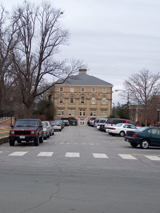 (ISO 80, 1/800 sec., f/3.1) Click to enlarge. |
 (ISO 80, 1/800 sec., f/2.8) Click to enlarge. |
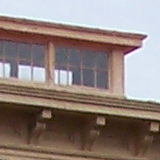 |
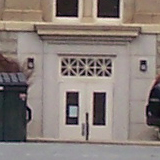 |
 |
 (ISO 80, 1/640 sec., f/2.8) Click to enlarge. |
 (ISO 140, 1/250 sec., f/3.5) Click to enlarge. |
 (P, ISO 80, 1/400 sec., f/3.7, +1.0 EV) Click to enlarge. |
 |
 |
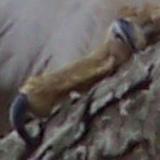 |
In the first two samples above, we can see that although the DX7590 is able to capture a decent amount of information, the fine details have a soft appearance. In addition, the first crop shows some JPEG artifacts along the edges of the window. We are a bit surprised to see JPEG artifacts at all when shooting with the highest quality setting. The next two samples demonstrate a fairly common problem of purple fringing with the DX7590. Although it won't be a major problem unless you plan on printing larger than 8"x10", it is an important issue to bring to light. In the fifth sample, the DX7590 shows off the capabilities of its 10x zoom lens capturing this unsuspecting squirrel. In the final sample, we were able to take a reasonable shot of this bird from approximately 25' away without getting attacked. In Auto mode, we found that the camera had trouble focusing on our subject. So, we quickly switched to Program mode with center-zone focus and applied a +1.0 EV compensation to counter the strong backlighting. Purple fringing is also quite evident in this shot.
Overall, the image quality of the DX7590 is pretty good. Despite the purple fringing and JPEG artifacts, the camera generally produces very good exposures without over-saturating/sharpening the images. The softness issue is most likely due to an aggressive noise reduction process. Although you shouldn't always expect ultra-crisp 11"x14" pictures with this camera, it can no doubt produce some very excellent prints up to 8"x10". It is really too bad that the JPEG compression is so high at the "Fine" setting because it results in some noticeable detail loss.
Night Shot
 ((Manual, ISO 80, 5 sec., f/3.1) Click to enlarge. |
 |
The DX7590 is only able to reach its longest shutter speed (16 seconds) in either Shutter-priority or Manual mode. In this shot taken in Manual mode, the camera handles noise very well. Unfortunately, JPEG artifacts are abundant along fine edges/lines in this shot, resulting in a significant loss of detail and clarity.
Movie Mode
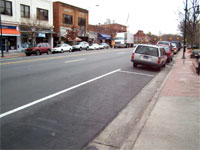 (640x480, 12 fps) Click to view. |
Other than the fact that the DX7590 can record unlimited video and audio at 640x480, the movie mode is rather disappointing. When set to 640x480, the video is very choppy due to its 12 fps capture ability. When the camera is set to record at 320x240, the clips become noticeably smoother with the video at 20 fps. Overall, however, we are disappointed with the slow frame rates.










10 Comments
View All Comments
Locut0s - Saturday, February 12, 2005 - link
I could be wrong but isn't Kodak well known for making relatively low quality consumer and prosumer digital cameras while making really good top of the line digital cameras? By top of the line I mean REALLY top of the line.bpt8056 - Saturday, February 12, 2005 - link
I have been looking at both the Panasonic FZ20 and the Kodak DX7590. I just spoke with the VP of Digital and Film Imaging from Kodak the other day and she basically said that the DX7590 is considered a "prosumer" type of camera, but with simplicity in mind. There's the keyword: simplicity. I like to take good quality pictures and I know the FZ20 is the one to get. However, my wife does all the organizing and printing since she's a consultant from Creative Memories. She wants the process of organizing, printing, ordering, etc. as easy as possible which the Kodak cameras can help her with. Even after repeatedly showing her the procedure with our current camera, she still needs my help and I tend to be busy doing something else.Here's my take on the DX7590 and the FZ20:
FZ20:
Pros
+ High resolution, sharp details
+ Image stabilization
+ Hotshoe
+ TIFF Mode
+ High Zoom (12x)
+ Colors are good, but shows a hint of yellow
+ Chromatic aberration almost nonexistant
Cons
- Poor low-light/indoor shots (external flash can fix this)
- Noise level is nasty above ISO 100 (hence indoor pics won't look too sharp)
- Not quite as compact as DX7590
- Simplicity??
DX7590:
Pros
+ Kodak Color science
+ White balance (the best I've seen)
+ High Zoom (10x)
+ Noise level is pretty good
+ Can be configured as point-and-shoot
+ EasyShare (simplicity)
+ External flash can be used (need to have bracket)
Cons
- Aggressive compression
- Soft details (grass looks muddy)
- Chromatic aberration is apparent
- No image stalization
- No TIFF or RAW mode
The FZ20 will give better results with pictures, but the DX7590 provides a better ease of use.
defter - Saturday, February 12, 2005 - link
Don't forget Panasonic FZ3: small size and 12x zoom with image stabilizer at ~$320.BPB - Friday, February 11, 2005 - link
The Panasonic reviews are impressive. Interesting that it too has slow frame rates for video with sound.One big plus, to my way of thinking, is the Kodak printer dock. We have one and love it, even though the price per print isn't that cheap. Still, it's a lot easier than heading out to a store or emailing to an eshop.
Wesley Fink - Friday, February 11, 2005 - link
#5 - If you are running the native and highest 1600x1200 resulution on your Dell, you are still compressing your image from 2576x1716 to 1600x1200 when you view it. Your Dell screen is less than 2 megapixels, so filling the screen is not any great indication of the quality of a 5 megapixel image. You would likely be better judging quality by viewing actual pixels on screen and scrolling around the image.ironman67 - Friday, February 11, 2005 - link
I've had a Lumix DMC-FZ20 for over a month--Fantastic!!! Pictures taken at medium quality at sharp and detailed even when I enlarge them to fill my 20 in. Dell LCD.BPB - Friday, February 11, 2005 - link
As a DX6490 owner, I think I'd be very happy with this camera. We may sell the 6490 and upgrade. Not being a bigtime photographer, the problems they mention here wouldn't matter much. The few annoyances the 6490 has for us seemed to have been bettered in this model. So, as an average camera schmuck, I think this would be a good camera.But I am going to look into the Lumix mentioned above.
plk21 - Friday, February 11, 2005 - link
I bought my mom the DX6490 (the 4MP version) for Christmas 2003, and it's a GREAT digicam. I'm thinking of getting this one for myself.The Doc is a nice feature for technophobes like my mother, with simple instructions like "Put the camera on the doc, and press the big button". That's one reason I reccomend Kodak cameras to less tech savy people. combined with Picasa2, they're absolutely perfect for those types of people. I get a lot less "support calls" for the Kodaks than other digicams.
Souka - Friday, February 11, 2005 - link
Agree....Also...yet another Kodak review on AT...ugh.... :(
fass mut - Friday, February 11, 2005 - link
for $500 clams..i'd go for the Lumix DMC-FZ20, 12X image stabilized!